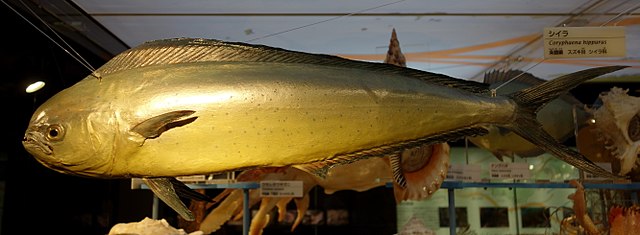Dolphinfish:
What is It?, history, cultivation, nutritional value, uses, recipes, and more...
The Dolphinfish, also known as mahi-mahi, is a migratory fish of the species Coryphaena hippurus, a marine fish belonging to the family Coryphaenidae or dolphinfish family. It is distributed across all the world’s oceans, primarily in tropical and subtropical waters. These fish tend to travel in schools and are commonly found in open waters.
Índice
What is the Dolphinfish?
The dolphinfish is a fish with a compressed and elongated body that can reach a size of 230 cm and a weight of 39.6 kilograms, although its typical length is around 100 cm and it usually weighs between 800 grams and one kilogram. In adulthood, males develop a bony crest on their foreheads that distinguishes them, and the anterior profile of their snout becomes more vertical. They have a large mouth with bands of small, oval teeth on both jaws. The dorsal and anal fins lack spines; the dorsal fin has between 55 to 65 rays and extends along the nape and caudal fin. This caudal fin is large and quite forked.
Additionally, this fish displays small cycloid scales and rather striking colors. It has a bright metallic blue-green color on the back, transitioning to golden yellow on the belly, with scattered iridescent green-blue spots. Its dorsal fin is deep blue-green, while the caudal, anal, and pelvic fins are primarily yellow. Young specimens may have vertical bar-like markings on the sides of their bodies.
Historia del Perico
In the Eastern Pacific Ocean, the dolphinfish is distributed from San Diego, California (United States), to Antofagasta (Chile).
In Peru, the dolphinfish is commonly found along the entire coastal region.
This migratory species spans its habitat from the coastal waters of San Diego, California, in the United States, all the way down to Antofagasta in Chile. This extensive range has allowed the dolphinfish to become a notable presence in the marine ecosystems of the Pacific.
In Peru, the dolphinfish is a familiar sight along the entirety of the coastal region. Its vibrant colors and distinct features have made it a sought-after catch for both recreational anglers and commercial fisheries. The presence of the dolphinfish in Peruvian waters has contributed to the rich tapestry of the country’s fishing heritage, playing a role in traditional cuisine and local fishing practices.
From its origins in the Eastern Pacific to its prevalence in Peruvian coastal waters, the dolphinfish’s history reflects its significance as a marine species that has captured the attention and admiration of those who encounter it.

Common Name of the Dolphinfish
| Spanish | Dorado, lampuga, llampúa, llampuga, lirio, pez limón, mahi mahi |
| French | Coryphène commune |
| Portuguese | Doirado |
| English | Common dolphinfish |
Scientific Name of the Dolphinfish
Coryphaena hippurus
Taxonomy of the Dolphinfish
| Kingdom | Animalia |
| Filo | Chordata |
| Class | Actinopterygii |
| Superorder | Acanthopterygii |
| Order | Perciformes |
| Suborder | Percoidei |
| Gender | Coryphaena |
| Specie | C. hippurus Linnaeus, 1758 |
Synonymy of the Dolphinfish
Scomber pelagicus (Linnaeus, 1758)
Coryphaena fasciolata (Pallas, 1770)
Coryphaena chrysurus (Lacépède, 1801)
Coryphaena imperialis (Rafinesque, 1810)
Lepimphis hippuroides (Rafinesque, 1810)
Coryphaena immaculata Agassiz, 1831
Lampugus siculus Valenciennes, 1833
Coryphaena scomberoides Valenciennes, 1833
Coryphaena margravii Valenciennes, 1833
Coryphaena suerii Valenciennes, 1833
Coryphaena dorado Valenciennes, 1833
Coryphaena dolfyn Valenciennes, 1833
Coryphaena virgata Valenciennes, 1833
Coryphaena argyrurus Valenciennes, 1833
Coryphaena vlamingii Valenciennes, 1833
Coryphaena nortoniana R. T. Lowe, 1839
Coryphaena japonica (Temminck y Schlegel, 1845)
Etymology of the Dolphinfish
Coryphaena: Derived from the Greek word “κορυφή” (koryphe), meaning summit or apex.
Mahi-mahi: A term originating from the Hawaiian language, meaning “very strong,” referring to the process of reduplication.
Habitat of the Dolphinfish
- Habitat
Habitat of the Dolphinfish
Dolphinfish inhabit tropical and subtropical waters in the Atlantic, Indian, and Pacific Oceans.
They often form schools and are found in open waters far from the coast, at depths ranging from five to ten meters, although they can also be encountered closer to the shore. Their diet primarily consists of fish and zooplankton, although they can also consume crustaceans and squid.
This species reaches sexual maturity at 4 to 5 months of age, reproducing in open waters. After spawning, they approach the coast when temperatures rise, with the eggs and larvae remaining pelagic. The frequency of their spawning varies.
Geographic Distribution of the Dolphinfish

Lima, Arequipa, Tacna, Lambayeque, Callao, Áncash, La Libertad, Piura, Moquegua, Tumbes
Seasonal Availability of the Dolphinfish
- March, April, May, June
Nutritional Value of the Dolphinfish
The dolphinfish is a low-fat fish, making it a lean species with a composition similar to that of other white fish. It contains all essential amino acids and, like other similar marine species, has a high content of B-group vitamins, especially B1, B2, B3, and B12. In terms of minerals, it contains appreciable amounts of magnesium, potassium, and phosphorus, which contribute to bone, muscle, and nervous system health.
The dolphinfish stands out for its high protein content. Additionally, it provides Omega-3 and Omega-6 fatty acids that help control cholesterol and prevent cancer.
Health Benefits of the Dolphinfish
The dolphinfish is rich in proteins. It contains Omega-3 fatty acids like EPA and DHA, as well as vitamins A and D.
Contraindications or Side Effects
There is currently no evidence of adverse effects or drug interactions related to its consumption, apart from the risk of allergies, in which case consumption is discouraged.
| 10 Porciones por Kilogramo | |
| Tamaño de porción | 100g |
| Cantidad por porción Calorías |
91 |
| Cantidad por 100g | |
| Energía | 381 kJ |
| Grasa Total | 0.4 g |
| Sodio | ● |
| Carbohidratos totales | 0.0 g |
| Carbohidratos disponibles | ● |
| Fibra Dietaria | ● |
| Proteínas | 20.5 g |
| Calcio | 4 mg |
| Fósforo | ● |
| Zinc | ● |
| Hierro | 0.83 mg |
| Potasio | ● |
| Agua | 76.5 g |
| Cenizas | 1.2 g |
| Vitamina A | ● |
| Tiamina (B1) | ● |
| Riboflavina (B2) | ● |
| Niacina (B3) | ● |
| Vitamina C | ● |
| Acido Fólico (B9) | ● |
| β-Caroteno | 0 μg |
| Fuente: Tablas peruanas de composición de alimentos – Centro Nacional de Alimentación y Nutrición – Ministerio de Salud – Perú | |
Derived Products and Ways of Consuming the Dolphinfish
Uses of the Dolphinfish
The dolphinfish is primarily used as an ingredient in a wide variety of culinary dishes. It is also valued for its numerous nutritional properties, particularly its contribution to protein and fatty acids.
- Culinary
- Medicinal
Culinary Use of the Dolphinfish
The flesh of the dolphinfish features a rosy hue and a firm texture. Depending on the source, it's categorized as either white fish, blue fish, or even semi-fatty fish.
It is commonly enjoyed fried, although it can also be prepared as a stew, grilled, or even baked.
It is considered a flagship ingredient in Peruvian cuisine, where it can be found baked, stewed, fried, or served raw in ceviche.
The World Health Organization (WHO) recommends consuming fish and seafood 2 to 3 times a week due to their significant nutritional contribution.
Medicinal Use of the Dolphinfish
Among the main health benefits offered by the dolphinfish are:
Prevents 5 diseases: Obesity, Diabetes, Cancer, Heart conditions, Alzheimer's.
Boosts immunity.
Promotes intellectual development.
Supports heart health.
Strengthens bones.
Provides a balanced diet.
Prevents bone decalcification and enhances the skeletal system.
Slows down muscle loss.
Slows cellular aging.
Possesses anti-inflammatory properties.
Improves cognitive functions, including memory.



